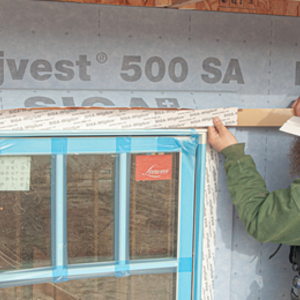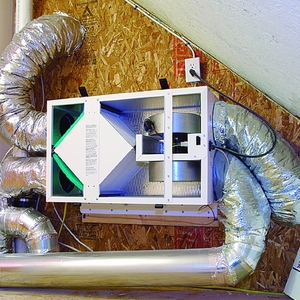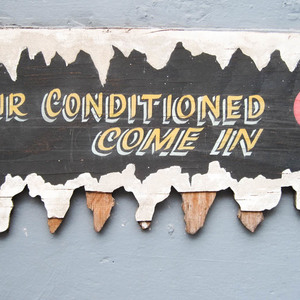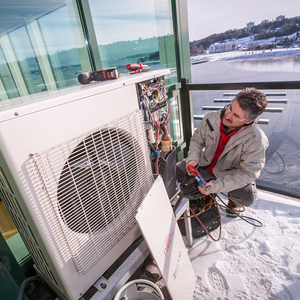
In simpler times, choosing heating and cooling equipment amounted to calling a contractor or two, getting what seemed like a good price, and letting the contractor do the rest.
Those days are rapidly disappearing. Faced with whole new categories of equipment that were virtually unknown a generation ago, homeowners have many more choices of what to buy, some of which are not familiar to old school contractors. They also face more nuanced questions about the heating and cooling equipment they choose. Which is more important, lower initial cost or lower operating costs? Should the equipment be all-electric, or is it OK in the era of climate change to buy appliances that burn fossil fuels? Is it safe to invest in new technology, or will that turn out to be an expensive mistake?
So-called low-load homes, built to exceed basic requirements of the building code, with more insulation and better air sealing, present another level of opportunity as well as complexity.
Energy and design consultants working with computer models can offer precise estimates of heating and cooling needs and the type of equipment—if not the manufacturer and model number—best suited to meet them. When the goal is to certify a new or renovated house under a rating program such as Passive House or the Living Building Challenge, that level of detail is a must. Energy consumption right down to the kilowatt hour is a make-or-break question for certification.
Whether a computer-armed consultant is in the cards, having a grasp of heating and cooling basics is a good idea for anyone building a new house or renovating an old one. Why bother? You won’t be spending money unnecessarily. You’ll at least know the right questions to ask the HVAC contractor you’re thinking about hiring. And you’ll be investing in equipment…
Weekly Newsletter
Get building science and energy efficiency advice, plus special offers, in your inbox.

This article is only available to GBA Prime Members
Sign up for a free trial and get instant access to this article as well as GBA’s complete library of premium articles and construction details.
Start Free TrialAlready a member? Log in















12 Comments
You Honor... Within the last two months or so, I’ve taken just about any kind of webinar available out there. Zero energy, foundations, advanced framing, fenestration, and I even survived a full two day HVAC design webinar, one of the best I’ve ever taken (Kudos to the Wollin group in CA), and another great webinar with Alex Maney, a Wrightsoft instructor.
What I learned was how to perform Manuals J, S, and D correctly, but also how to perform Manual T, or the air distribution, aka, diffusers, grills and registers. We used Write-Suite Universal from RightSoft. Holy cow, I thought my two brain cells were going to explode. I found Manual T to be the most complex, and almost as bad as Manual S. That kind of explains why most HVAC contractors don’t know how to design a system correctly. It takes forever to do a full HVAC calculation, and if you don’t know if you get the job, why bother… right?
Manual T is a step by step detail on size, shape, location and air throw or flow for all diffusers, grills and registers, based on manufacturer’s data sheets. These were pages and pages of register sizes for the same 80 cfm air supply. Have you guys looked at an Air Delivery chart? I think is easier to study Quantum Mathematics than that stuff. They were just as bad as the Manual S and equipment data sheets. I found out that just a single manufacturer can have infinite number of 2 ton units. Really? Do they, manufacturers, do it on purpose? OHH... and 2 tons DOES NOT means 24k Btuh, Yikes!!!
I didn’t know that selecting air filters go thru the same torturing process… air filtration, media, design flows, static pressurs and pressure drops. We even looked weird looking Duct Calculator; it remind me of a round sliding ruler I had in school in the 70’s.
To finish it off, once I survived doing all calcs., I went very proudly, inflated chest and all, to my HVAC contractor and said, “I want this and that, just like I designed it”, then the HVAC guy said to me, “I don’t work with that brand of equipment”… BUM, BUM, BUM… that was the sound of my shotgun!!! Then, faced to the concrete, all I remember was “You have the right to remain silent….” And that’s the rest of the story, your Honor.
Make sure the building envelope is very well insulated and air sealed. This will make the HVAC system design and performance predictable. A single glowing, heat producing orb on the lowest level of a Passive House would do quite a decent job of heating the home evenly. To try and keep a home with a high ACH50 comfortable through all seasons is a futile exercise and really not necessary with quality construction.
Insulation and air sealing is key. Recently installed radiant heating and heat the house from a water heater, it works quite well. We insulated the attic and turned it into conditioned space, so the duct work now stays cool. We run the ECM blower year round as that keeps the air clean. Pay attention to the controls and use variable units. The key is to ramp up slowly rather than cycle off and on.
If you are looking for someone to do an accurate Manual J don't forget those companies hired to do your HERS rating. HERS raters review every aspect of the home from framing, insulation, windows, roofing, square footage, foundation and how it all works with every mechanical aspect of the home.
Some rating companies do HVAC calculations and nobody is better at the details, so don't forget to check them out for accurate calculations.
My company designs HVAC systems for the majority of our spray foam customers. When we have control over the building envelope, it makes it much easier to design an HVAC system that truly performs. It is a common practice for us to get a request to bid foam on a house where the HVAC system is already installed and the HVAC contractor "just assumed" the house was getting standard traditional insulation. Usually this means the HVAC contractor installed equipment at 500/sf per ton and then added a little extra. I put together this Powerpoint 5 or 6 years ago on How to Properly Design, Commission, and Install an HVAC System at the following link -https://6992a318-c73a-42fb-ae7f-b2e6d85808ef.filesusr.com/ugd/24dbd8_82357cac5d6b4835aae65083aaaacc4c.pdf or you can find it on my website at http://www.WeTestOthersGuess.com.
This is an area where Free / Open Source Software (FOSS) would be a tremendous help to the world. Integration with an equally open and capable envelope analysis software might save billions in energy costs, over-sized units, and poor human comfort and healthcare costs. 99% of residential stock comes online without calcs, so how do we expect to do better? 1% are going to pay for the consultant, but society as a whole could invest a few million into FOSS and earn 1000x return.
Her you go Steve -
Free: https://www.loadcalc.net/index.php
For $49 - $200: https://hvacloadcalculator.com/
Elite sofware's Rhvac Online: $149/year
Anyone in the HVAC business can afford $300/year on Right-Suite. If you can't, you got bigger problems.
Thanks for these. I was implying something 3D that can model shading, roof slopes, temperature points, etc. It looks like NREL's OpenStudio / EnergyPlus for SketchUp might be an option. The plugins are open, although obviously, SketchUp no longer is.
You're right on NREL's EnergyPlus for whole house modeling, its a great program, but SU is only $300/year, and less if you get the discounts.
A version of a free Manual J spreadsheet from ACCA
https://www.acca.org/communities/community-home/librarydocuments/viewdocument?DocumentKey=0bc73e80-6c3c-43cb-bdb2-43316a380fa4
Free Manual S spreadsheet from ACCA, 2 versions
https://www.acca.org/viewdocument/acca-speed-sheet-for-manual-s
Revit also has energy modeling
https://www.energy.gov/eere/buildings/articles/autodesk-brings-detailed-energyplus-hvac-simulation-revit
Unfortunately the CoolCalc program maxes out at R21 cavity insulation and R6 exterior.
Log in or become a member to post a comment.
Sign up Log in